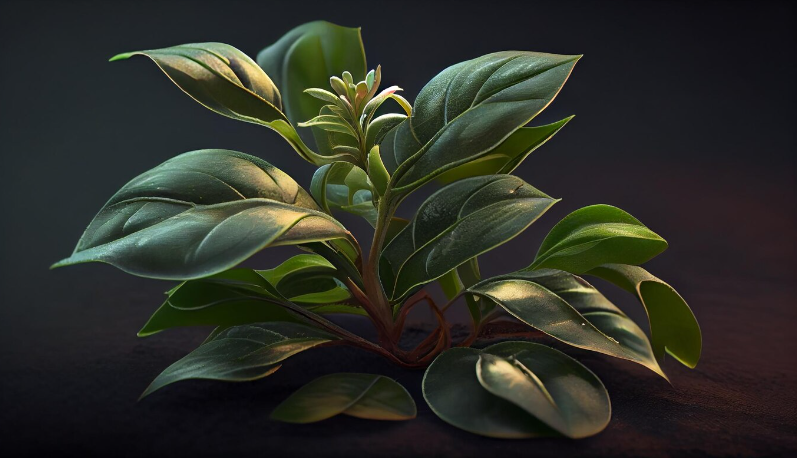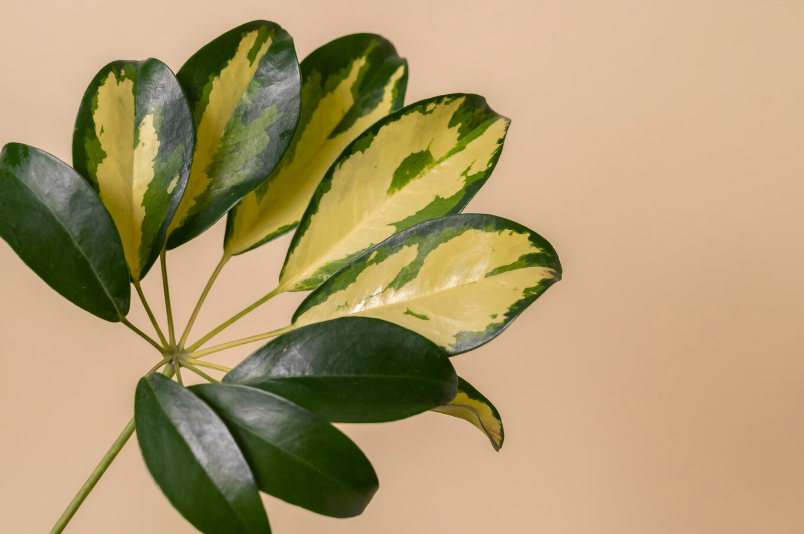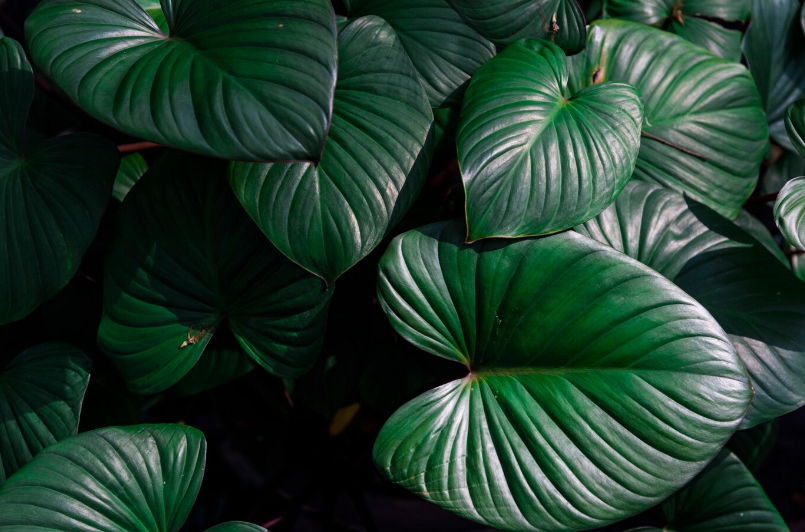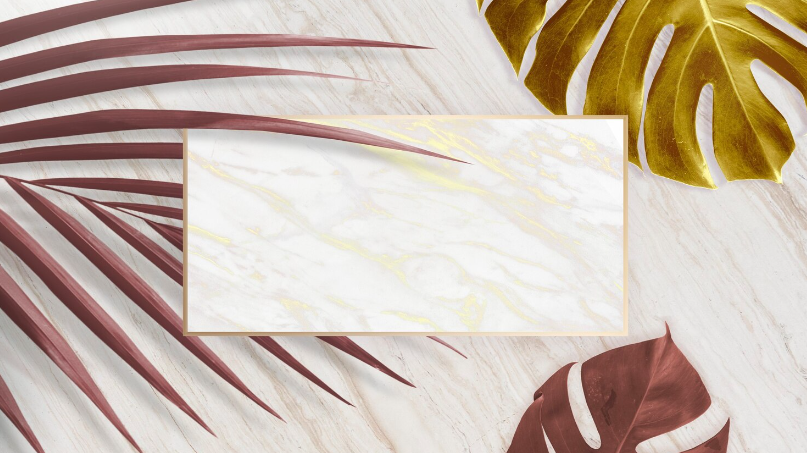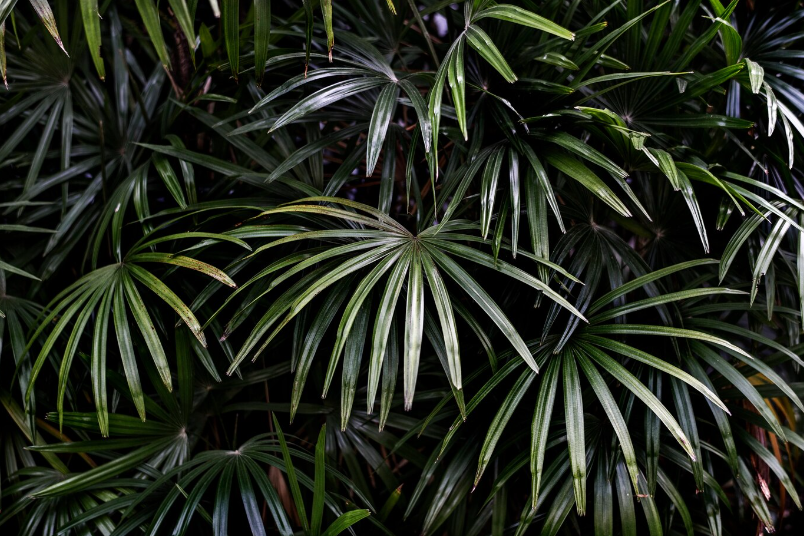The Mystique of Philodendron Spiritus Sancti and White Wizard
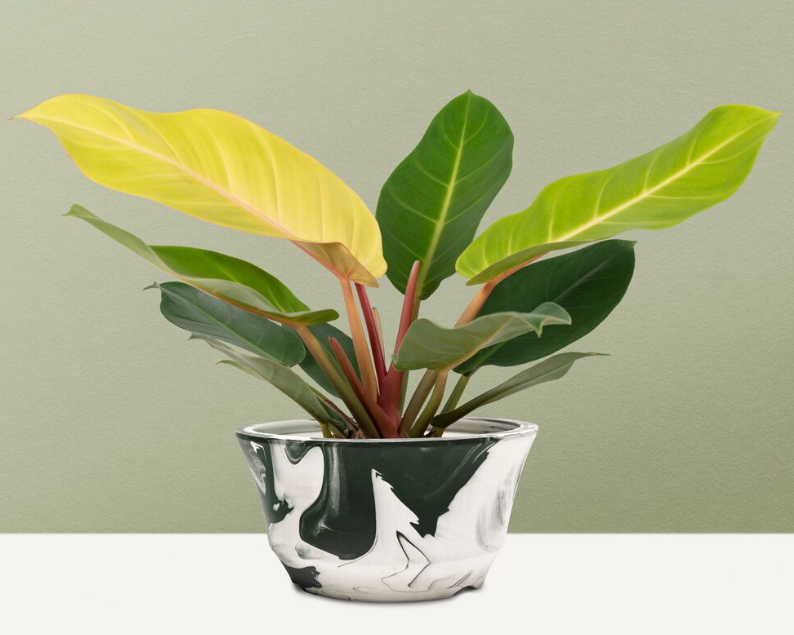
Among the vast expanse of the plant kingdom, there are certain species that captivate the hearts and minds of flora enthusiasts all over the world. Philodendron Spiritus Sancti and White Wizard are two such enigmatic and mesmerizing plants that have garnered a substantial following. These extraordinary philodendrons possess an aura of mystique and allure that has made them highly sought after by collectors and connoisseurs.
Philodendron Spiritus Sancti, with its imposing stature and dramatic foliage, is a true testament to the grandeur of nature. Its large, glossy leaves, adorned with intricate patterns and vibrant shades of green, command attention and curiosity. This remarkable plant, native to the rainforests of Colombia, has become a Holy Grail for many plant enthusiasts, as acquiring a specimen is considered a feat of dedication and devotion.
White Wizard, on the other hand, is a philodendron that exudes an ethereal and mystical charm. Its pure white leaves, reminiscent of a wizard’s cloak, create an enchanting contrast against the backdrop of greenery. This rare variety, believed to originate from the Amazon rainforest, possesses an otherworldly beauty that is hard to resist. Collectors are captivated by its elusiveness and the sense of magic it brings to any botanical collection.
The allure of Philodendron Spiritus Sancti and White Wizard extends beyond their physical appearance. These plants have an almost spiritual quality that draws people in, inspiring a profound sense of awe and wonder. Their scarcity and the challenge of obtaining them only add to their enigmatic allure. They have become symbols of beauty, rarity, and the boundless diversity of the natural world.
Whether you are an avid plant collector or simply appreciate the wonders of nature, Philodendron Spiritus Sancti and White Wizard are plants that hold a special place in the hearts of many. Their undeniable allure, captivating beauty, and the air of mystery that surrounds them make them truly unique botanical treasures.
Philodendron Spiritus Sancti
The Philodendron Spiritus Sancti is a rare plant known for its stunning beauty and mystique. Native to the rainforests of Brazil, this impressive plant is highly sought after by collectors and plant enthusiasts.
Named after the Holy Spirit, the Philodendron Spiritus Sancti has large, wavy leaves with a distinctive silver variegation that gives it a magical appearance. The leaves are thick and leathery, and they can grow up to 3 feet long, making it an attention-grabbing addition to any collection.
This Philodendron species requires careful cultivation due to its specific environmental needs. It thrives in high humidity and bright, indirect light conditions. Expert growers advise keeping the Spiritus Sancti in a well-draining soil mix and providing regular misting to maintain the ideal moisture levels.
Due to its rarity and unique beauty, the Philodendron Spiritus Sancti is highly prized among collectors. Its limited availability and difficulty in propagation contribute to its exclusive status in the plant world. As a result, the price for a well-established Spiritus Sancti plant can be quite high.
For plant enthusiasts looking to add a touch of magic and elegance to their indoor garden or collection, the Philodendron Spiritus Sancti is a fascinating choice. Its otherworldly appearance, paired with its air-purifying qualities, make it a true treasure for any plant lover.
If you’re lucky enough to acquire a Philodendron Spiritus Sancti, be prepared to provide it with the proper care it deserves. It will reward you with its stunning presence and add an enchanting touch to any space it graces.
Why is Spiritus Sancti So Rare and Expensive?
Philodendron Spiritus Sancti, also known as the White Wizard, is one of the rarest and most expensive philodendron plants in existence. There are several reasons why this plant is so sought after and costly.
- Endangered Status: One of the main reasons why Spiritus Sancti is rare and expensive is because it is classified as an endangered species. It is native to the cloud forests of Ecuador, where it is now incredibly difficult to find in the wild. The limited supply of this plant contributes to its high cost.
- Slow Growth: Spiritus Sancti is a slow-growing plant, which means that it takes a significant amount of time for it to reach maturity. The growth process can take several years before the plant produces its distinctive fenestrated leaves. The slow growth rate, combined with high demand, makes Spiritus Sancti a scarce and expensive commodity.
- Difficulty in Cultivation: Another factor that adds to the rarity and expense of Spiritus Sancti is the difficulty in cultivating this plant. It has specific environmental requirements, including high humidity, filtered light, and well-draining soil. Meeting these conditions can be challenging for growers, resulting in lower yields and higher prices.
In addition to its rarity and expense, Spiritus Sancti is highly prized for its unique aesthetic qualities. It features large, deeply-lobed leaves with beautiful white veining, giving it an ethereal and otherworldly appearance. The combination of its striking visuals and scarcity makes Spiritus Sancti a highly coveted plant among collectors and enthusiasts.
Overall, the rarity and expense of Philodendron Spiritus Sancti can be attributed to its endangered status, slow growth, and difficulty in cultivation. These factors make it a prized and exclusive plant that is only accessible to a fortunate few.
Identifying Philodendron Spiritus Sancti
Philodendron Spiritus Sancti, also known as White Wizard, is a highly coveted and rare plant among collectors. Its distinct features make it easily recognizable, but it is important to be able to identify it correctly to avoid confusion with other similar Philodendron species. Here are some key characteristics to look for when identifying Philodendron Spiritus Sancti:
| Characteristics | Description |
|---|---|
| Leaf Shape | The leaves of Philodendron Spiritus Sancti are large, heart-shaped, and deeply incised. The edges of the leaves have prominent lobes, giving them a unique appearance. |
| Leaf Color | The mature leaves of Philodendron Spiritus Sancti are a striking bright white color, which contrasts with the dark green color of the petioles. The leaves retain their white color as they age. |
| Leaf Texture | The leaves of Philodendron Spiritus Sancti have a velvety texture, giving them a touchable and luxurious feel. The velvety texture is more pronounced on the upper surface of the leaves. |
| Growth Habit | Philodendron Spiritus Sancti is a climbing plant that can grow to impressive heights if provided with proper support. The plant produces aerial roots that help it cling and climb. |
| Plant Size | When fully grown, Philodendron Spiritus Sancti can reach a substantial size, with leaves measuring around 30 to 60 cm in length. It is important to provide enough space for the plant to grow and thrive. |
By carefully observing these characteristics, you can confidently identify Philodendron Spiritus Sancti and add this prized plant to your collection. Its mystique and beauty make it a captivating addition to any indoor garden. Explore the enigmatic White Knight Philodendron in our exclusive collection.
Propagation and Care of Philodendron Spiritus Sancti
Philodendron Spiritus Sancti is a rare and highly sought-after plant known for its stunning white variegation and large, elongated leaves. While it can be a challenging plant to get your hands on, it is equally important to understand how to propagate and care for this unique species to ensure its longevity and health.
Propagation:
Propagation of Philodendron Spiritus Sancti is typically done through stem cuttings. Select a healthy, mature stem with at least two to three nodes. Using a clean, sharp knife or shears, make a clean cut just below a node. Remove any lower leaves, leaving only a few at the top.
Place the cutting in a well-draining potting mix, ensuring that at least one node is covered. You can use a mix of peat moss, perlite, and orchid bark to provide the ideal environment for the cutting to establish roots. Mist the cutting lightly and cover it with a plastic bag or a humidity dome to create a humid environment.
Keep the cutting in a warm and bright location, but away from direct sunlight. Maintain high humidity by misting the cutting daily or by using a humidifier. Within a few weeks to a few months, you should start to see new roots forming. Once the roots are well-established, you can transplant the cutting into a slightly larger pot with a well-draining potting mix.
Care:
Philodendron Spiritus Sancti requires bright, indirect light to thrive. Place it near a window where it can receive filtered sunlight or use grow lights if natural light is limited. Avoid exposing the plant to direct sunlight, as it can scorch the leaves.
Keep the soil consistently moist, but not waterlogged. Water the plant when the top inch of the soil feels dry to the touch. This species prefers slightly higher humidity, so consider using a humidifier or placing a tray of water near the plant to increase moisture levels.
Fertilize the plant with a balanced, water-soluble fertilizer during the growing season (spring and summer) to promote healthy growth. Be sure to follow the instructions on the fertilizer packaging for proper dosage and frequency.
Regularly check the plant for pests, such as spider mites or mealybugs, and take appropriate measures to control them. Keep an eye out for any signs of stress or disease, such as yellowing leaves or leaf spots, and address them promptly.
By following these propagation and care guidelines, you can enjoy the beauty of Philodendron Spiritus Sancti for years to come. Remember, this plant may require some extra attention, but its stunning appearance and uniqueness make it well worth the effort.
The Enigma of Philodendron White Wizard
Philodendron White Wizard is a mysterious and elusive plant that has captured the attention of plant lovers around the world. With its striking white variegation and large, glossy leaves, this Philodendron variety stands out from the rest. But what makes White Wizard truly enigmatic is its scarcity in the wild and the difficulty in propagating it.
One of the reasons why White Wizard is so elusive is because it is a rare mutation of the Philodendron spiritus sancti. The mutation causes the leaves to develop a unique white variegation pattern, which gives the plant an ethereal appearance. This mutation occurs naturally in the wild, but finding a White Wizard specimen is like finding a needle in a haystack.
Despite its rarity, the allure of White Wizard has led plant collectors and enthusiasts to search far and wide for this elusive plant. The demand for White Wizard cuttings and plants has skyrocketed, with prices reaching astronomical levels. It seems that the more scarce and difficult to obtain a plant is, the more desirable it becomes.
The enigma of Philodendron White Wizard lies not only in its scarcity, but also in its propagation challenges. Due to the nature of the mutation, it is difficult to produce White Wizard plants through traditional methods such as seeds or stem cuttings. Propagating White Wizard requires skilled techniques such as tissue culture or air layering, which adds to the mystique and value of this plant.
For those lucky enough to own a Philodendron White Wizard, it becomes a prized possession in their plant collection. It is a symbol of dedication and perseverance, as well as a testament to the beauty and wonder of nature’s mysteries. The enigma of White Wizard reminds us that sometimes the most valuable things are the ones that are hardest to find.
Rarity and Appeal of Philodendron White Wizard
Philodendron White Wizard is a highly sought-after and rare variety of the Philodendron plant family. Its unique white foliage and variegation make it a favorite among collectors and enthusiasts.
What sets Philodendron White Wizard apart from other Philodendron species is its stunning appearance. The leaves are predominantly white, with green veins running through them, creating a mesmerizing pattern that resembles a piece of art. The contrast between the white and green colors adds to its appeal and makes it a true eye-catcher.
Due to its rarity, Philodendron White Wizard is considered a gem in the plant community. It is challenging to find, and the demand for this plant often exceeds its availability. As a result, it can be quite expensive to acquire, with prices varying depending on the size and overall condition of the plant.
Aside from its visual appeal, Philodendron White Wizard is also adored for its relatively easy care requirements. It thrives in bright, indirect light and prefers well-draining soil. Regular watering and moderate humidity levels are essential for its growth and overall health. With proper care, this stunning plant can bring beauty and elegance to any indoor space.
Collectors and plant enthusiasts are drawn to Philodendron White Wizard not only for its rarity but also for its ability to brighten up any room and create a focal point. Whether displayed as a standalone plant or incorporated into a lush indoor jungle, it never fails to capture attention and become a conversation starter.
In conclusion, Philodendron White Wizard is a rare and highly coveted plant known for its striking white foliage and variegation. Its uniqueness, combined with its relatively easy care requirements, makes it a favorite among collectors and enthusiasts. If you are lucky enough to come across this rare gem, it is sure to be a stunning addition to your plant collection.
Is Philodendron White Wizard a Climber or Crawler?
Philodendron White Wizard is a unique and beautiful plant that many plant enthusiasts are eager to add to their collection. One of the questions that often comes up when discussing this plant is whether it is a climber or a crawler.
Philodendron White Wizard is a climber by nature. This means that it has the ability to climb up surfaces and attach itself using aerial roots. It can be trained to grow up a moss pole, trellis, or other support structure, which allows it to reach impressive heights.
However, it is important to note that Philodendron White Wizard can also be grown as a crawler if desired. This means that it can be allowed to trail and cascade over the edges of pots or hanging baskets. Its long vines and lush foliage make it an excellent choice for creating a beautiful hanging display.
Whether you choose to train Philodendron White Wizard to climb or allow it to trail, it is important to provide it with the right conditions to thrive. This includes bright, indirect light, well-draining soil, and regular watering. Additionally, you may need to provide support, such as a moss pole or hooks, if you choose to grow it as a climber.
- Philodendron White Wizard is a climber by nature, but it can also be grown as a crawler.
- It can be trained to grow up a moss pole, trellis, or other support structure.
- Alternatively, it can be allowed to trail and cascade over the edges of pots or hanging baskets.
- Provide Philodendron White Wizard with bright, indirect light and well-draining soil.
- Regular watering and support may be necessary if growing it as a climber.
Overall, whether you choose to grow Philodendron White Wizard as a climber or a crawler, it is sure to add a touch of beauty and mystique to any indoor or outdoor space.
Enhancing Variegation in White Wizard
Philodendron White Wizard is known for its stunning variegation, with leaves that feature a mix of green and white colors. However, if you want to enhance the variegation in your White Wizard plant, there are a few tips you can follow.
First, make sure your White Wizard is getting enough light. Variegated plants tend to require more light than their non-variegated counterparts. Place your plant in a location where it can receive bright, indirect light for several hours each day.
Second, be mindful of the temperature and humidity levels. White Wizard plants prefer warm and humid environments, so try to keep the temperature between 70°F and 85°F (21°C and 29°C) and the humidity level around 50-60%. You can use a humidifier or place a tray of water near the plant to increase humidity.
Additionally, consider fertilizing your White Wizard plant. Use a balanced, slow-release fertilizer to provide the necessary nutrients for healthy growth and vibrant variegation. Follow the instructions on the fertilizer packaging for dosage and frequency.
Lastly, keep an eye out for any pests or diseases. Spider mites and mealybugs can affect the overall health and appearance of your White Wizard plant. Regularly inspect the leaves and stems for any signs of infestations and take appropriate measures to control the pests.
By following these tips, you can enhance the variegation in your White Wizard plant and enjoy its mesmerizing beauty to the fullest. Remember to provide adequate light, maintain optimal temperature and humidity, fertilize as needed, and keep pests at bay for a thriving and stunning White Wizard.
Comparing White Wizard with Other Varieties
When it comes to the world of rare and exotic houseplants, few varieties garner as much attention as Philodendron Spiritus Sancti and White Wizard. These two varieties are known for their stunning beauty and unique characteristics that set them apart from other members of the Philodendron family.
While both Philodendron Spiritus Sancti and White Wizard share similarities, they also have some distinct differences that make each variety unique.
Size: Philodendron Spiritus Sancti is a rather large plant, with leaves that can grow up to three feet long. In contrast, White Wizard tends to be smaller in size, with leaves that typically reach a maximum length of two feet.
Leaf Shape: One of the most noticeable differences between these two varieties lies in their leaf shape. Philodendron Spiritus Sancti features elongated, narrow leaves that taper to a point, while White Wizard has broader, more heart-shaped leaves with distinct lobes.
Coloration: White Wizard and Philodendron Spiritus Sancti both sport stunning variegation, but they differ in the color patterns. Philodendron Spiritus Sancti showcases deep green leaves with white veins, while White Wizard boasts leaves that are mostly white with green marbling.
Care Requirements: Both of these varieties require similar care, including bright, indirect light, well-draining soil, and regular watering. However, White Wizard tends to be slightly more tolerant of lower light conditions compared to Philodendron Spiritus Sancti.
Rarity and Availability: While Philodendron Spiritus Sancti is considered one of the rarest and most elusive houseplants, White Wizard is more readily available. However, both varieties can be quite challenging to find, and collectors often face long waitlists and high prices when trying to acquire them.
In conclusion, both Philodendron Spiritus Sancti and White Wizard are captivating plants that can add a touch of mystique to any plant collection. Whether you prefer the elongated leaves and deep green coloration of Philodendron Spiritus Sancti or the heart-shaped leaves and striking variegation of White Wizard, these two varieties are sure to impress.
The Difference Between White Wizard and White Princess
Philodendron Spiritus Sancti has gained popularity among plant enthusiasts in recent years, and two of its most sought-after cultivars are White Wizard and White Princess. While they may look similar at first glance, there are distinct differences between the two varieties that make them unique in their own way.
White Wizard, also known as Philodendron ‘Mai Tai’, is characterized by its large, paddle-shaped leaves that are predominantly white in color. The leaves have a velvety texture and are often speckled with green variegation. One of the key features of White Wizard is its ability to produce fenestrations, which are windows or holes in the leaves that enhance its aesthetic appeal. This cultivar is known for its impressive size, with leaves that can reach up to 3 feet in length.
On the other hand, White Princess, also known as Philodendron ‘White Knight’, has a more compact growth habit compared to White Wizard. Its leaves are smaller in size, typically around 1 to 2 feet in length, and have a slightly different shape. While White Princess also displays white variegation on its leaves, it tends to have more green speckles and patches, giving it a marbled appearance. This cultivar may produce fenestrations, but they are not as prominent as those found in White Wizard.
In terms of care, both White Wizard and White Princess require similar conditions to thrive. They prefer bright, indirect light and well-draining soil. These cultivars also benefit from regular watering, allowing the soil to dry out slightly between waterings to prevent over-watering. A humid environment, such as that provided by a humidifier or pebble tray, can also promote healthy growth.
Whether you choose White Wizard or White Princess, both cultivars of Philodendron Spiritus Sancti are sure to add a touch of elegance and beauty to any plant collection. Their unique characteristics make them highly sought after by collectors and enthusiasts alike, and caring for these exquisite plants can be a rewarding experience for any plant lover.
White Wizard vs. White Knight: Key Distinctions
While both the White Wizard and White Knight are highly sought after varieties among plant enthusiasts, there are key distinctions that set them apart.
1. Appearance:
The White Wizard features long, narrow leaves with a vibrant white variegation, giving it a striking and majestic appearance. In contrast, the White Knight has heart-shaped leaves that are predominantly green with subtle white variegation, which creates a softer and more delicate look.
2. Growth Pattern:
Another notable distinction lies in their growth patterns. The White Wizard tends to grow more upright and compact, making it ideal for smaller spaces or as a centerpiece on a table or shelf. On the other hand, the White Knight has a more vining growth habit and can trail or climb, making it a great choice for hanging baskets or training on a trellis.
3. Care Requirements:
When it comes to care, both varieties share similarities. They prefer bright indirect light and moist, well-draining soil. However, the White Wizard is known to be slightly more tolerant of lower light conditions compared to the White Knight, which requires slightly higher humidity levels for optimal growth.
4. Rarity and Availability:
While both the White Wizard and White Knight are considered rare and highly coveted, the White Wizard tends to be more elusive and harder to find. Its scarcity often leads to higher prices and limited availability. On the other hand, the White Knight, while still relatively rare, is more commonly available in plant nurseries and online stores.
In conclusion, the White Wizard and White Knight are both exceptional and enchanting philodendron varieties, each with its own unique qualities. Whether you prefer the majestic appearance of the White Wizard or the delicate charm of the White Knight, both plants are sure to add a touch of magic to your indoor jungle.
The Rarest Philodendrons: White Wizard and Others
If you’re a plant enthusiast, you may already be familiar with the Philodendron family. These tropical plants are popular in homes and gardens due to their unique foliage and easy care. However, there are some varieties within the Philodendron family that are particularly rare and highly sought after by collectors. One such variety is the Philodendron White Wizard, which has become known for its stunning white foliage.
The Philodendron White Wizard features large, glossy leaves that are completely white, with no hint of green. This striking feature sets it apart from other Philodendron varieties and makes it a true collector’s item. Due to its rarity, the White Wizard is considered one of the most coveted Philodendron plants.
Another rare variety within the Philodendron family is the Philodendron Spiritus Sancti. This plant can be distinguished by its long, lance-shaped leaves that gradually taper to a point. The leaves have a dark green coloration, creating a beautiful contrast against the white veins that run throughout the foliage. The Spiritus Sancti is highly sought after by collectors due to its unique appearance and limited availability.
Philodendron Jose Buono is another rare and highly sought after variety. This plant features large, heart-shaped leaves that are dark green in color. The unique feature of the Jose Buono is the random splashes of white and cream on the leaves, creating an eye-catching variegation. Due to its limited supply and extraordinary variegation, the Philodendron Jose Buono is a prized addition to any plant collection.
In conclusion, the Philodendron family offers a wide variety of plants for every plant enthusiast. However, for those looking for something truly special, the rare varieties such as the White Wizard, Spiritus Sancti, and Jose Buono are worth the hunt. Their unique foliage and limited availability make them highly sought after by collectors worldwide.
General Insights and Curiosities
Philodendron Spiritus Sancti and White Wizard are two rare and highly sought-after plants in the world of houseplants. They are known for their unique and mesmerizing foliage, which sets them apart from other plants.
One interesting fact about Philodendron Spiritus Sancti is that it is native to the forests of Colombia. This plant is extremely rare and difficult to find in cultivation. Its lush, velvety leaves and distinctive white veins make it a true beauty in any collection.
White Wizard, on the other hand, is a close relative of Philodendron Spiritus Sancti. It also features stunning white veins on its leaves, but with a slightly different leaf shape. This plant is also rare and highly prized by collectors.
Both of these plants require specific care to thrive. They prefer bright, indirect light and well-draining soil. They should be watered regularly, allowing the soil to dry out slightly between waterings. They also benefit from regular misting to provide them with the high humidity they require.
In terms of propagation, both plants can be propagated through stem cuttings. However, due to their scarcity, it is important to handle them with care and ensure proper conditions for successful propagation.
It is worth noting that Philodendron Spiritus Sancti and White Wizard can be quite expensive and may be challenging to find. Collectors often go to great lengths to acquire these plants, resulting in a thriving market for rare plant enthusiasts.
In conclusion, Philodendron Spiritus Sancti and White Wizard are two remarkable plants that captivate plant lovers around the world. Their striking foliage, scarcity, and challenging care requirements make them highly sought-after by plant collectors, adding to their allure and mystique.
The Rarest Plant on Earth and in Philodendrons
When it comes to rare and unique plants, few can rival the Philodendron Spiritus Sancti and White Wizard. These extraordinary plants have captivated the hearts of plant enthusiasts all over the world.
The Philodendron Spiritus Sancti is widely regarded as the rarest plant on Earth. This elusive plant is native to the rainforests of Central and South America, and its natural habitat remains largely unknown. Its scarcity and mysterious nature have made it highly sought after by collectors and growers alike.
Not only is the Spiritus Sancti incredibly rare, but it also possesses a striking beauty that sets it apart from other philodendrons. Its leaves are large, shiny, and deeply lobed, with a pattern of intricate veins that resemble a work of art. The plant tends to grow in a clumping habit, producing multiple stems with foliage that ranges in color from deep green to a vibrant, almost metallic, shade of blue.
Another extraordinary plant that deserves attention is the White Wizard. This stunning philodendron is known for its exquisite white variegation, which creates a striking contrast against its deep green leaves. The White Wizard is a slow-growing plant with a compact and bushy habit, making it a perfect choice for indoor cultivation.
Like the Spiritus Sancti, the White Wizard is a rare find and can be quite challenging to acquire. Its popularity continues to grow, and it has become a highly sought-after plant among collectors and enthusiasts.
The allure of these rare philodendrons goes beyond their scarcity and beauty. Each plant has a unique story that adds to its mystique. Whether it’s the Spiritus Sancti’s unknown origins or the White Wizard’s enchanting variegation, these plants have captured the imagination of plant lovers everywhere.
If you’re lucky enough to own one of these rare beauties, be prepared to give them the extra care and attention they need. These plants require specific growing conditions, including bright, indirect light and a well-draining soil mix. Regular pruning and fertilizing are also essential to keep them healthy and thriving.
As the demand for rare philodendrons continues to rise, it’s important to remember the importance of sustainable cultivation and ethical sourcing. By supporting responsible growers and nurseries, we can help ensure the conservation of these extraordinary plants for generations to come.
Toxicity and Size of Philodendron White Wizard
Philodendron White Wizard, like many other plants in the Philodendron genus, contains calcium oxalate crystals, which can cause irritation and swelling if ingested or if it comes into contact with the skin or eyes. It is important to handle these plants with care and keep them out of reach of children and pets.
As for its size, Philodendron White Wizard is known to be a vigorous grower, capable of reaching impressive heights if given the right conditions. Its leaves can grow up to several feet long and wide, making it a statement plant that is sure to catch anyone’s attention. However, it is important to note that the size of the plant can vary depending on several factors, including its growing environment and care.
The large size of Philodendron White Wizard makes it a great choice for those looking to add a touch of tropical elegance and drama to their indoor or outdoor space. Just make sure to provide it with enough space to grow and thrive, and be prepared to give it the attention it needs to maintain its impressive size and beauty.
Power and Mystique of White Wizards
White Wizards, such as the Philodendron Spiritus Sancti and White Wizard cultivars, possess an undeniable power and mystique that sets them apart in the world of plants. These unique and rare varieties are highly sought after by collectors and enthusiasts for their captivating beauty and elusive nature.
One of the most enchanting aspects of White Wizards is their pure white foliage, which is a striking contrast to the typical green leaves found in other plant species. This vibrant white coloration gives White Wizards an ethereal and almost otherworldly appearance, making them a true standout in any collection.
In addition to their stunning appearance, White Wizards also possess a sense of mystery and intrigue. The difficulty in cultivating and propagating these plants adds to their allure, as they require specific conditions and care to thrive. This exclusivity and rarity make White Wizards a symbol of prestige and accomplishment for those fortunate enough to successfully grow them.
Another element of the mystique surrounding White Wizards is their ability to adapt and survive in diverse environments. These plants exhibit a resilience and strength that is often associated with magical beings. They can tolerate a wide range of temperatures, light conditions, and humidity levels, making them a versatile addition to any indoor or outdoor space.
Furthermore, White Wizards have a unique ability to purify the air and remove toxins, contributing to a healthier and more harmonious living environment. This natural air filtration system adds to their appeal, as they not only enhance the aesthetics of a space but also promote overall well-being.
Overall, the power and mystique of White Wizards lie in their captivating beauty, elusive nature, and ability to adapt and thrive in diverse environments. The allure of these plants stems from their exclusivity and rarity, making them highly coveted by collectors and enthusiasts. Whether displayed as a centerpiece or a statement piece, White Wizards have a magical presence that elevates any space they inhabit.
Q&A:
What is Philodendron Spiritus Sancti?
Philodendron Spiritus Sancti is a rare and highly sought-after plant species in the genus Philodendron. It is known for its distinctive white variegation, which gives it a unique and mystical appearance.
Where can I buy Philodendron Spiritus Sancti?
Philodendron Spiritus Sancti is extremely rare and difficult to find for sale. It is often sold through specialized plant nurseries or online plant communities. However, due to its high demand and limited availability, it can be quite expensive.
How do you care for Philodendron Spiritus Sancti?
Philodendron Spiritus Sancti requires bright, indirect light and high humidity to thrive. It should be watered regularly, allowing the top inch of soil to dry out before watering again. It also benefits from occasional misting and regular fertilization during the growing season.
What is the difference between Philodendron Spiritus Sancti and White Wizard?
Philodendron Spiritus Sancti and White Wizard are both rare and highly sought-after philodendron varieties. However, there are some differences between them. Spiritus Sancti has large white variegation on its leaves, while White Wizard has smaller, more subtle white markings. Additionally, Spiritus Sancti is often considered more difficult to find and more expensive compared to White Wizard.
Can I propagate Philodendron Spiritus Sancti?
Yes, it is possible to propagate Philodendron Spiritus Sancti through stem cuttings. However, it can be more challenging compared to other philodendron varieties. The cuttings should be taken from healthy, mature plants and rooted in a well-draining potting mix. It may take longer for the cuttings to root and establish compared to other philodendron species.
